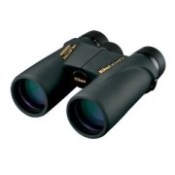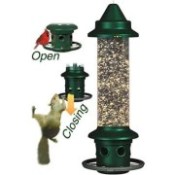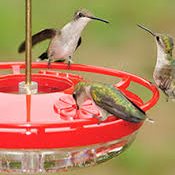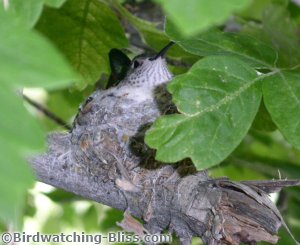
Hummingbird Habitat
Create your own hummingbird habitat and attract hummingbirds to your backyard by planting flowering annuals, perennials, shrubs, and trees.
You can always put up a hummingbird feeder as an additional attractant, but brilliant blooming flowers are irresistible to ahummingbird passerby.
Most backyards are composed of grass with perhaps a few scattered shrubs and trees. What is lacking is diversity and different levels of plants or vertical structure to create quality hummingbird habitat.
Creating a Hummingbird Habitat in Your Backyard
Hummingbirds are attracted not only to the brilliant colors of flowering plants, but also how these plants are arranged in your backyard. Plant a variety of flowers, shrubs & trees to create a hummingbird habitat of varying plant heights.
Also keep in mind that some flowers will only bloom in early spring & summer, while others will bloom only in the fall. Choose a variety so that you will have flowers blooming throughout all seasons. This way hummingbirds will stick around longer and not have to leave to search for a better blooming garden or better hummingbird habitat.
| Easy to Grow Hummingbird Favorites | Plants By Region: |
| Annuals | Northeast & Midwest |
| Perennials | Southeast |
| Vines | Southwest & California |
| Small Trees and Shrubs | Northwest |
| Coastal Areas |
Food, Shelter & Water
Food, shelter and water is essential for animal survival. In addition to beautifying your backyard, your hummingbird habitat will provide hummingbirds not only with a food source, but also resting perches, shelter & cover from weather & predators, and breeding habitat.
Black-chinned and Ruby-throated hummingbirds, among others, are often found nesting in backyards filled with flower gardens. Creating an oasis of hummingbird habitat in a neighborhood filled with acres of green grass will not only attract hummingbirds, but other birds as well.
About Hummingbird Flowers, Pollination, & Nectar
Hummingbirds are specialized nectarivores that feed on dilute solutions of sugars with trace amounts of amino acids and electrolytes. Hummingbirds will harvest nectar from flowers of all colors, although they seem to prefer red flowers.
Flower nectar is digested and quickly converted into energy, supplying a hummingbird's carbohydrate requirements. They also dine on insects, spiders, and sometimes sap that oozes out of tree holes made by sapsuckers (woodpeckers).
When a hummingbird inserts its bill into the corolla (all the petals of a flower, collectively) of a flower, its forehead, beak, and chin may become well dusted with pollen, some of which will be transferred to neighboring flowers of the same species, so achieving cross-pollination.
Hummingbird bills vary greatly in length & shape according to the flowers at which they feed. In fact, co-evolution of flower shape and bill shape is a well-studied phenomenon.
Many plant families have evolved flower characteristics which make their nectar available only to hummingbirds and not to insects.
Such characters are long tube-like corollas with narrow openings and the absence of landing platforms which insects require. These flowers are oriented well away from leaves and entangling vegetation so that the feeding hummingbird can hover in front of or below them.
The nectar in hummingbird flowers is abundant, but not very concentrated compared with that of bee-pollinated flowers, as bees are more efficient at collecting small quantities of concentrated nectar.
The nectar sugar concentration of hummingbird-pollinated flowers ranges from 16-28% (McDade and Weeks 2004a), bee-pollinated flowers regularly exceed 35% (Bolten et al. 1979).
Water for Hummingbirds
Providing water is another element of creating your hummingbird habitat. Hummingbirds will drink from water droplets accumulated on plant leaves from rain or from sprinklers.
They typically do not come to bird baths if they are too deep, and avoid landing close to the ground because it makes them vulnerable to predators.
If you create a very shallow bath that's elevated above a cat's reach (cats kill millions of birds) and other mammal access, they may use it.
They will also enjoy a misting sprinkler from which to drink and bathe as they fly through it. Here is another video of a Ruby-throated hummingbird taking a bird bath sent to us from a visitor.
Plant Definitions
Below you'll find several tables of hummingbird plants for creating your hummingbird habitat. Here are some definitions of terms used in the tables:
Annual: Yearly. A plant that germinates, flowers, and sets seed during a single growing season, in the northern hemisphere during a single calendar year. A winter annual germinates in the fall and fruits the following spring or summer. So you'll have to plant annuals every year. They only live one year.
Biennial: Living 2 years only and blooming the second year.
Perennials: A plant that lives for more than a year and produces flowers on more than one occasion.
Herbaceous: A plant, either annual, biennial, or perennial, with the stems dying back to the ground at the end of the growing season. Also, leaf-like in color or texture, or not woody.
Woody: Plants with stems that add layers of woody growth each year. Wood is accumulated secondary xylem. In vascular plants, xylem is a specialized tissue, composed primarily of elongate, thick-walled conducted cells, which transports water and dissolved minerals through the plant body. Vascular plants are those which have xylem and phloem (tissue that transports food).
Cultivar: A variety of a plant developed from a natural species and maintained under cultivation
Tender: Susceptible to frost/cold weather.
Evergreen: Remaining green throughout the winter. Does not drop its leaves.
Deciduous: A deciduous trees is one that normally loses its leaves at the approach of winter or the dormant season.
Exposure: Amount of sunlight a plant requires
- Sun: more than a half day of direct sunlight
- Partial shade: 3-6 hrs of direct sunlight/day
- Shade: 3 hrs or less direct sunlight/day
Hardiness: The coldest temperature that a plant can tolerate though winter. See the USDA Plant Hardiness Zone Map.
Moisture requirements:
- Wet: Soil is saturated with water or even has shallow standing water
- Moist: Soil where water is always abundant from frequent waterings or low-lying where water accumulates
- Average Moisture: Typical garden soils that will support a lawn or most common garden plants.
- Dry: Soil where long periods of rains or waterings are absent.
- Arid: Unirrigated or infrequently irrigated soils of arid western climates.
Here's an excellent book that will give you specific recommendations on which
flowers to plant to attract hummingbirds and create your very own
Hummingbird Gardens![]() .
.
More Hummingbird Habitat, Flowers and Planting Tips
Related Hummingbird Information & Tips:
|
Our Favorite Bird Watching Binoculars, Squirrel-Proof Feeder & Hummingbird Feeder Read Our Reviews: |
||

Nikon Monarch M5
Best mid-priced bird watching binoculars. Waterproof, shockproof, multi-coated ED-Glass. |

|

Best Hummingbird Feeder
Drip-Free, Ant-moat, Durable, Easy to Fill and Clean. |
| Click Images or Links To View More Info | ||
Subscribe to Our FREE Newsletter: The Birder Alert!

